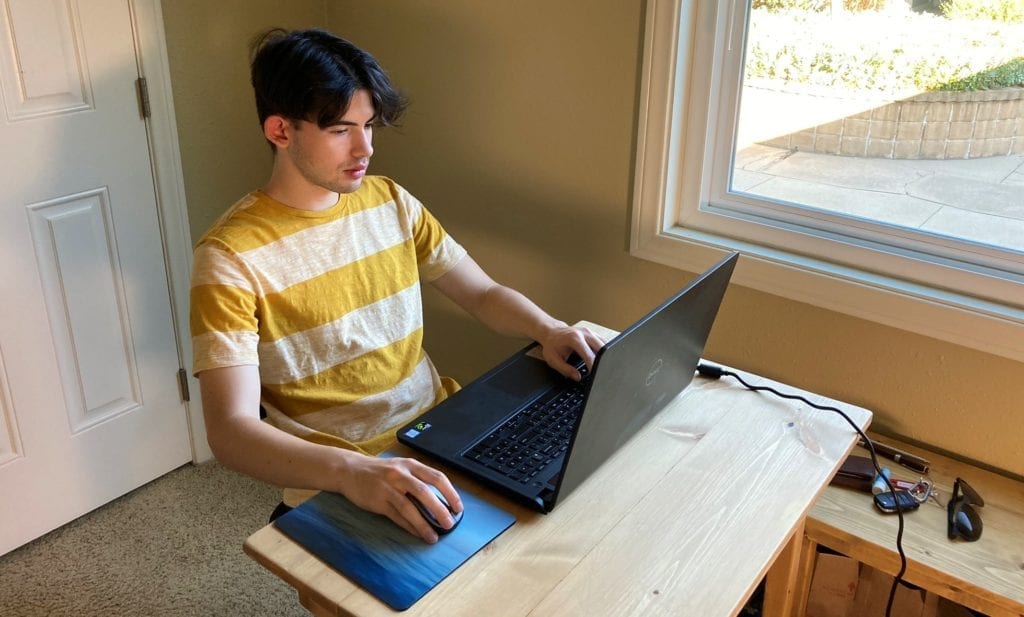
When she played youth sports, Vanessa Veto saw how lack of playing time caused dejected teammates to lose confidence both on and off the court.
“I know a number of people that quit playing sports due to their lack of participation in games, contributing to the attrition rate in youth sports,” said Veto, who played basketball, soccer and field hockey growing up. “Although winning is enjoyable, research has shown that the primary reason youths participate in recreational sports is to have fun. It simply isn’t fun for players who receive little to no playing time.”
The industrial engineering major is now helping under-used players see more action through a Summer Undergraduate Research Program (SURP) project, which uses goal programming to help coaches in youth basketball and soccer. The project also entails creating a website coaches can easily access and papers detailing the model and youth sports analytics.
“I’ve always enjoyed learning about using math to model real world situations and generate solutions,” said Kyle Smith, Veto’s SURP partner and fellow industrial engineering major.
The idea for the project came from faculty mentor Nian Cheng, who noticed the challenge confronting coaches and players on her daughter’s YMCA basketball team.
“Research shows that equal or fair playing time is one of the most prominent issues in youth sports,” said Cheng, a lecturer in the Industrial & Manufacturing Engineering Department. “The difficult yet important — and often required — task of ensuring equal playing time in youth sports shows there is a need for an efficient solution that addresses this issue.”
With the coach’s input, she decided to create a preliminary model for her daughter’s team, using goal programming, an optimization method she teaches in her IME 305 Operations Research II course. Goal programming is one of the multi-objective optimization methods that helps find the best solution that addresses multiple, often conflicting, goals, Cheng said.

The coach found the solution to be very helpful, Cheng said. “This inspired me to keep working on the application of analytical models in youth sports.”
According to the model, for basketball, everyone will be ensured equal playing time — or close to equal playing time if the total playing time cannot be equally divided among the number of players on the team. No player can stay off the court for two consecutive quarters, and every game, players take turns in the starting lineup.
For soccer, the model would also ensure players could try every position during a season. Team performance is also considered in the analytical model, with coaches ranking players based on performance in each position.
Delivering a solution to the users is an important part of the IME learning experience, Cheng said. The web application will allow coaches to access the project’s solutions and use them for their teams. Specifically, coaches can download a weekly lineup for the whole season based on the number of players on the team.
“Making sure the web application is functional and user friendly is my top priority at the moment,” said Smith, who also played basketball growing up. “Finishing the soccer model and testing different parameters will also be important for finishing the project. Then I’ll be writing a paper about youth soccer and how the model can be used for implementing equal and fair playing time.”
While the project can ensure youth sports are inclusive, it will also take a burden off coaches, said Veto, who has also coached youth sports herself.
“It can be extremely difficult and time-consuming for them to plan a lineup and substitution schedule for each game that ensures equal playing time,” she said. “Furthermore, conflicts can arise when parents or players perceive the allocation of playing time to be unfair.”
Using goal programming in a real-life scenario gives the two students an idea of what it will eventually be like in their careers, Smith said.
“Goal programming is useful for the complex decision-making problems that occur in many industries,” Smith said. “Also, being able to implement a solution that is user friendly and widely accessible is a key aspect in many projects – both academic and professional.”


